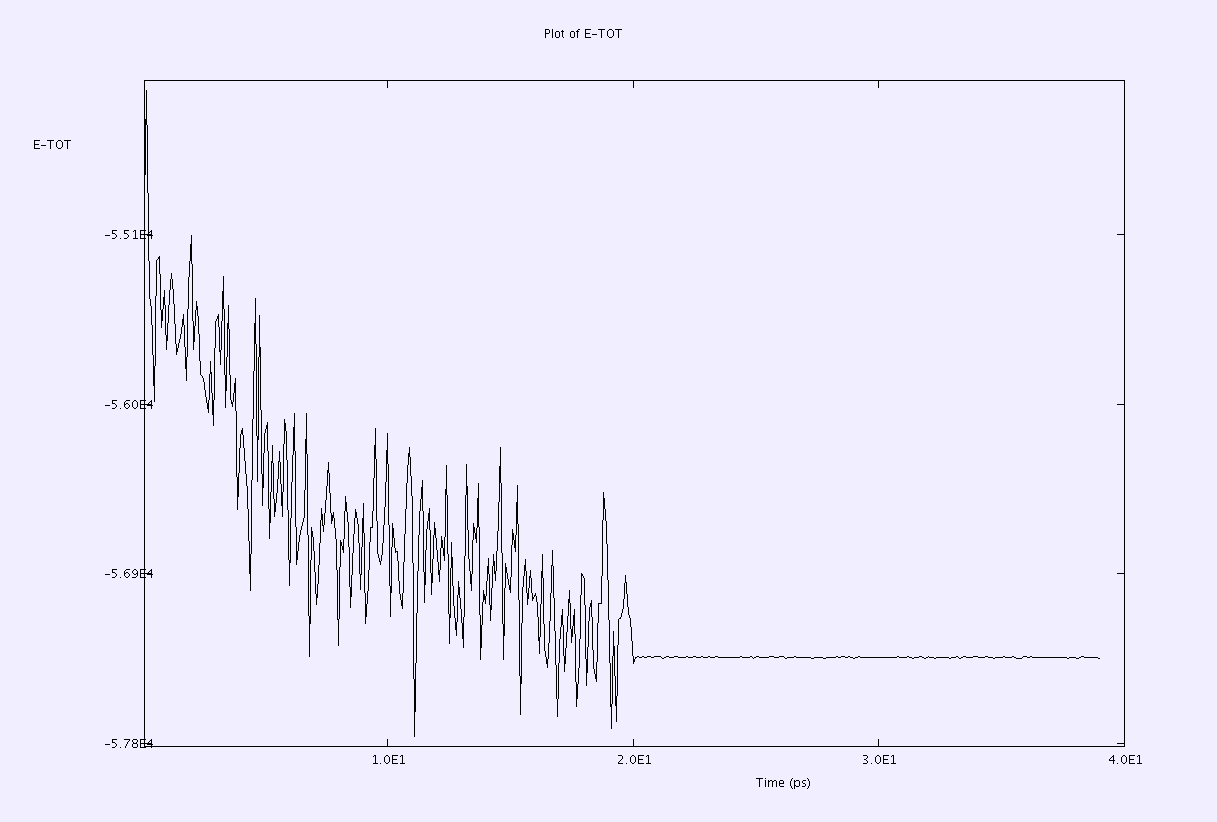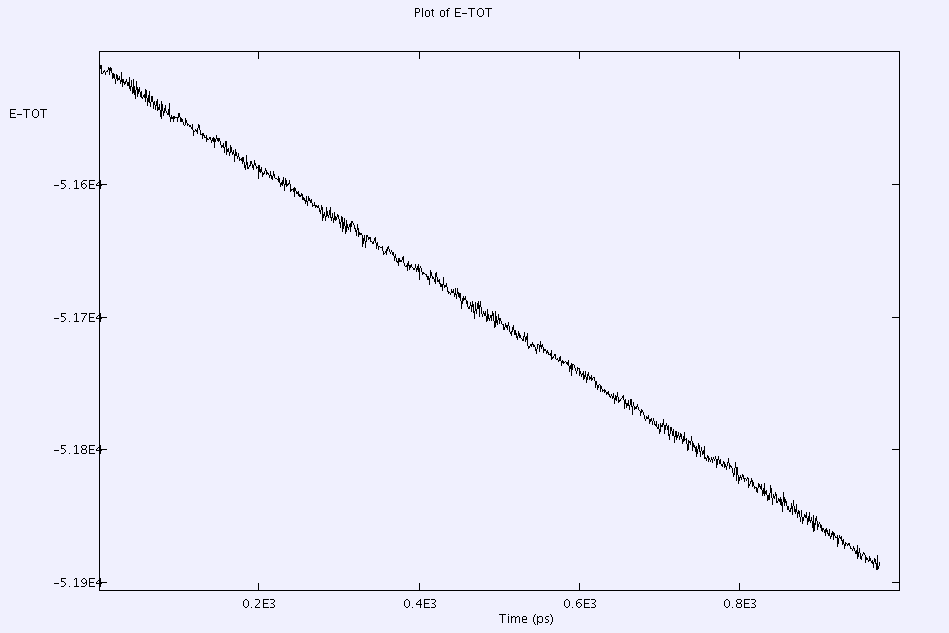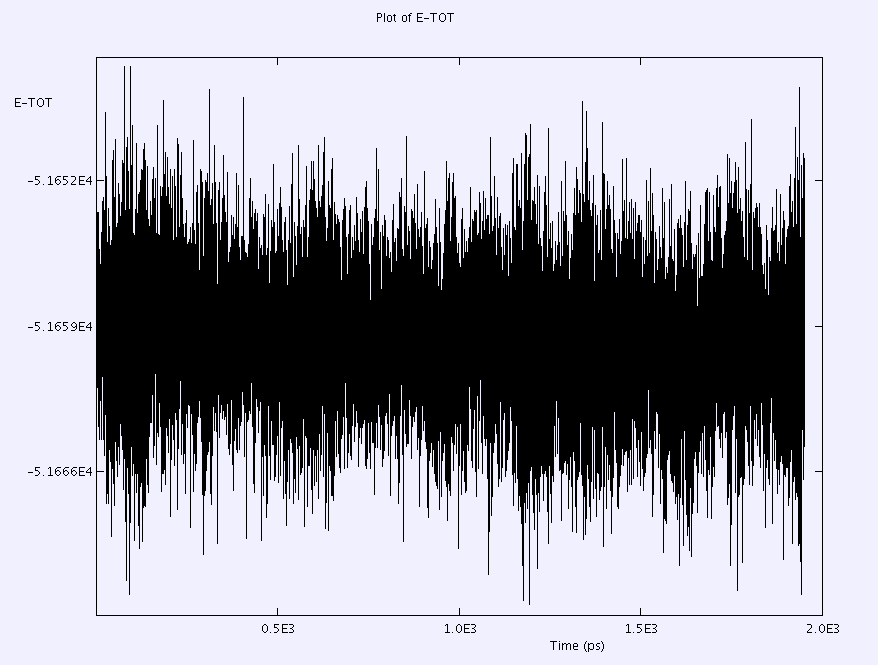Talk:Mod:Hunt Research Group/EnergyDrift
When carrying out NPT and NVT simulations with Nose-Hover (Equilibration and Production) you may come across a drift in the Total Configuration Energy. This may present itself with either a positive or negative slope.
This may occur for several reasons. (list to be expanded if and when more problems are encountered)
2 examples are 1. Two atoms coming too close together and repelling each other strongly. 2. Shake tolerance is not set to a sufficiently high level thus the constraints are not properly constrained leading to an energy drift.
To correct for 1. use capping and scale as recommended by Ruth for melting an IL from the crystal structure
- The capping default=1000 but use 2000 kbT per Å (Ruth)
- capping constrains the forces on individual atoms to be smaller or equal to a particular value and resets large forces.
- Use scaling, every 5 or 10 steps
- scaling scales all atomic velocities by the same amount to reproduce desired temperature (??)
an example of the E-Tot plot using capping=1000 and scaling=5 is shown
An example for case 2 is illustrated below for an NVT simulation at 400K - [BMIM]CL - with shake=1e-5
and corrected with shake=1e-8
The second solution was obtained from the DL_POLY forum - http://www.cse.scitech.ac.uk/disco/forums/ubbthreads.php?ubb=showflat&Number=2881&page=1
Which points to the fact that using a lower shake tolerance leads to poor conservation of the total energy.
A concise reason for this is being formulated!!



